From the September 2021 issue of Apollo. Preview and subscribe here.
Despite the great volume of writing about him, the way in which a boy born in Dublin in 1909 became the artist we know as Francis Bacon has remained unclear. Many of the essays and books about Bacon – among them some of the most gloriously entertaining accounts of any artist – have been written by people who knew him, particularly in his gregarious Soho years. Bacon himself was anxious to deflect attention from the years before his late success, and was able to distract anyone who might ask with a performance in which he might draw attention to only a few picaresque details. In 1959 the writer James Thrall Soby proposed to the Marlborough Gallery that MoMA publish a book about Bacon, at a time when the artist’s star was rising. He sent a sort of pro forma questionnaire for Bacon to fill out: what led him to want to be a painter? What, or who, were his influences? Bacon’s handlers at the gallery knew they would have to get him drunk to get him to answer these questions. They took him to lunch, but it was not a great success. Bacon was unable to answer the first question, offering instead unrepeatable references to his father, and the charming but misleading idea that he had somehow led a ‘life of leisure’ until taking up painting at the age of 30 or so.
 We know about this drunken lunch because of the dogged research of the authors of a new 880-page biography in which few stones, it seems, have been left unturned (this particular detail came from an unpublished letter to Soby). The writers Mark Stevens and Annalyn Swan won a Pulitzer Prize in 2005 for their biography of Willem de Kooning, and with the support of the Estate of Francis Bacon spent 10 years researching Bacon’s life and works. Stevens and Swan (a husband-and-wife team) have brought thoroughness and level-headedness – qualities not generally associated with mid-century Soho – to the task. They must have been greatly assisted by the laborious production of the catalogue raisonné published by the artist’s estate in 2016. Not only did Martin Harrison and his team track down works that were thought to be lost or destroyed (a lifelong habit of the painter), they also located diaries and correspondence that help to fill out our knowledge, in particular of the many years before Bacon’s first big success (which came in 1945 after a series of false starts).
We know about this drunken lunch because of the dogged research of the authors of a new 880-page biography in which few stones, it seems, have been left unturned (this particular detail came from an unpublished letter to Soby). The writers Mark Stevens and Annalyn Swan won a Pulitzer Prize in 2005 for their biography of Willem de Kooning, and with the support of the Estate of Francis Bacon spent 10 years researching Bacon’s life and works. Stevens and Swan (a husband-and-wife team) have brought thoroughness and level-headedness – qualities not generally associated with mid-century Soho – to the task. They must have been greatly assisted by the laborious production of the catalogue raisonné published by the artist’s estate in 2016. Not only did Martin Harrison and his team track down works that were thought to be lost or destroyed (a lifelong habit of the painter), they also located diaries and correspondence that help to fill out our knowledge, in particular of the many years before Bacon’s first big success (which came in 1945 after a series of false starts).
Stevens and Swan don’t glaze over the lost years completely or rely upon imaginative reconstruction. Bacon was in close contact with his cousin Diana Watson through the 1930s and her diary (which was published by the estate in 2020) is used extensively. Research undertaken for the book also happily uncovered the diary of Eric Allden, a supporter and lover of Bacon’s before his career took off. Allden gives a first-hand account of an ill-fated exhibition organised by Bacon and Eric Hall – another important older figure in Bacon’s life – in a Mayfair basement in 1934, in which the walls were painted dark red and the windows hung with velvet curtains. The conservative Allden found the work rather hard to take. He bought a painting called Head in Ecstasy but returned it to Bacon, who – devastated by the critical failure of his show – destroyed it, along with all of the unsold paintings.
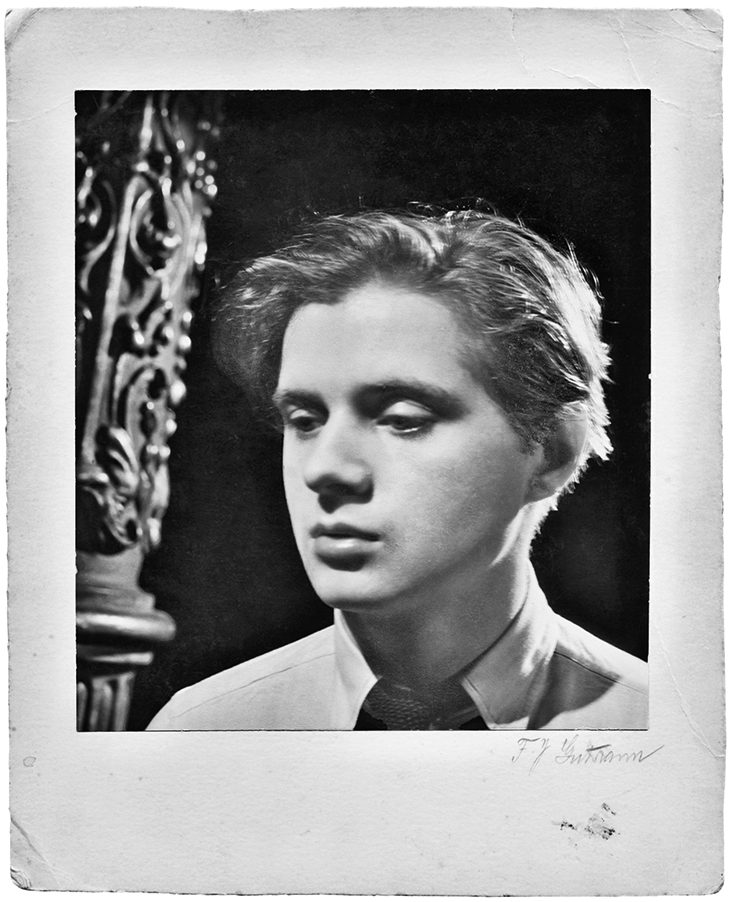
Francis Bacon photographed in his early twenties. Photo: Francis Julian Guttman, London (courtesy MB Art Collection)
Particularly fascinating are those episodes in Bacon’s earlier life in which only with hindsight is it possible to discern anything that we might recognise in the artist’s later persona. It’s a curious treat to see him as an Air Raid Warden, instantly recognisable in a group photo, his eyes looking characteristically downwards (Lucian Freud painted him a decade later with the same melancholy averted gaze). Bacon left London during the war on account of difficulties both with asthma and his ‘nerves’ (there’s a fair bit of this), and moved to a cottage on the grounds of Bedales School in Hampshire. Guests found him charmless. He may well have been depressed, and anxious. But Stevens and Swan make a compelling case for the productiveness – despite appearances – of the months spent here by himself (more or less), reading Nietzsche, flicking through copies of Picture Post brought to him by Eric Hall, painting, making mistakes, destroying his work, becoming the painter we know while no one was watching.
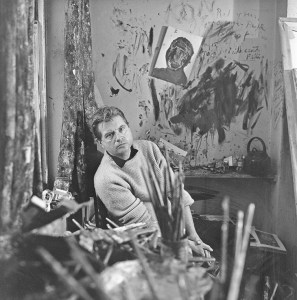
Francis Bacon photographed by Cecil Beaton in 1960 in his studio at Overstrand Mansions in Battersea, London. Photo: © The Cecil Beaton Studio Archive at Sotheby’s
Eric Hall supported the artist throughout the war years financially and emotionally; and it’s striking just how many people were always willing to support Bacon in one way or another. It’s good to see those individuals being properly credited: those who offered him a room to stay in, a studio space, a design commission, a cash advance, a word in the right ear, or the dependability he lacked from his family (hello Nanny Lightfoot). He would always have an impact on people he met, sometimes dramatically so. The married (and heterosexual) poet Thomas Blackburn fell in love with him in the back of a taxi. The painter Michael Wishart, struck by Bacon’s gaze across a room, ‘succumbed at once to his romantic charm’. Women could be enchanted by him too, like Madame Bocquentin who took young Francis in as a lodger, or – at the other end of his extraordinary life – the deputy director of the Prado, who in an interview with the authors said she’d ‘never seen somebody so gentle […] He looked you straight in the eye.’ It’s not possible to keep count of the number of people who said what excellent company he was: how he stripped life down to its essentials, how life-affirming he was, how charismatic.
This biography is the better for not being entirely seduced by Bacon’s performance or the glamour of his world. The volume of quotidian detail, especially in the unsuccessful years, serves to humanise the artist and thereby starts to unveil, in a sense, the persona he went on to create. How vulnerable he seems to have been then; how much looking after he seems to have needed, and found. Do the paintings look different after reading Revelations? Not really, but you start to see more clearly the artist’s own uncertainty and exposure in his subjects. And then it seems obvious. How else could he have done it?
Francis Bacon: Revelations by Mark Stevens and Annalyn Swan is published by William Collins.
From the September 2021 issue of Apollo. Preview and subscribe here.
Unlimited access from just $16 every 3 months
Subscribe to get unlimited and exclusive access to the top art stories, interviews and exhibition reviews.

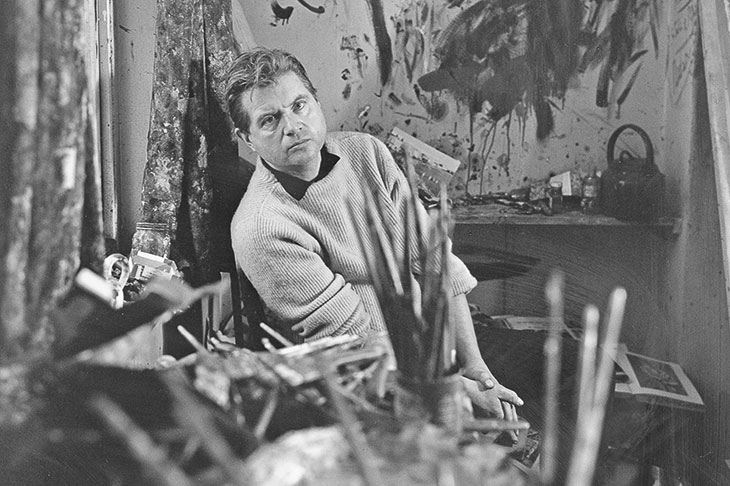
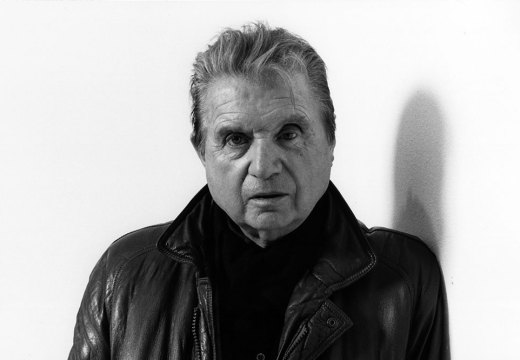
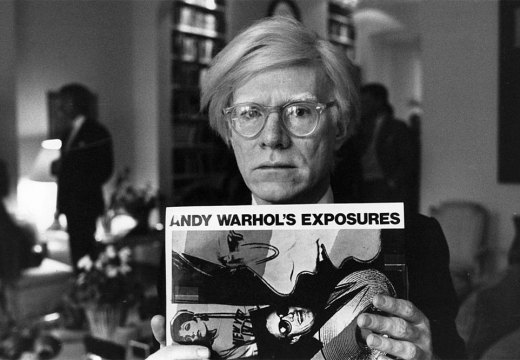
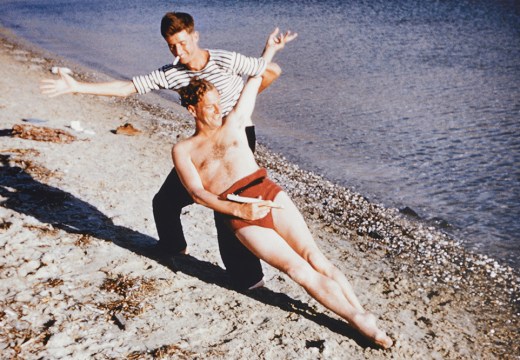









![Masterpiece [Re]discovery 2022. Photo: Ben Fisher Photography, courtesy of Masterpiece London](http://www.apollo-magazine.com/wp-content/uploads/2022/07/MPL2022_4263.jpg)
It’s time for the government of London to return to its rightful home